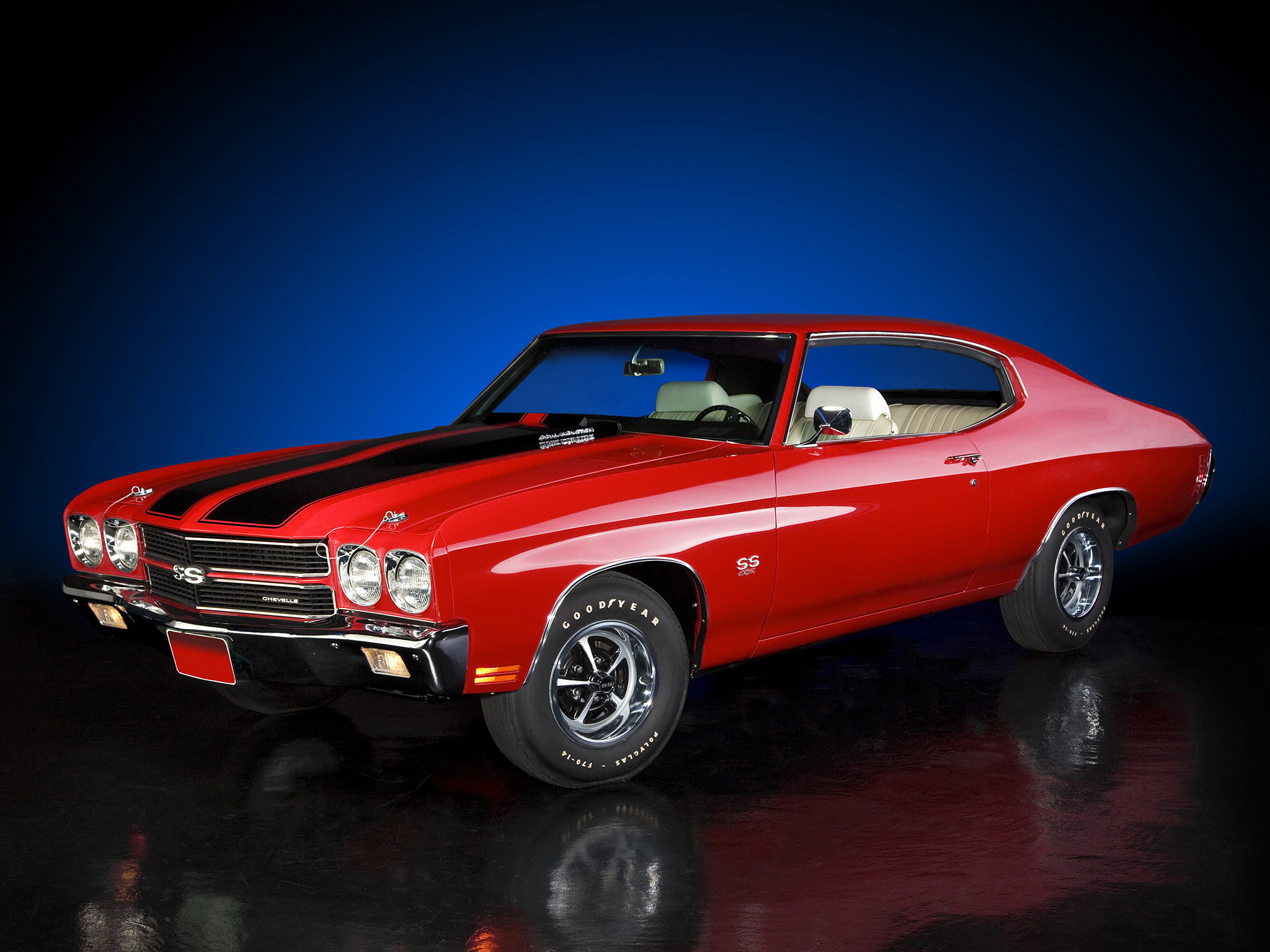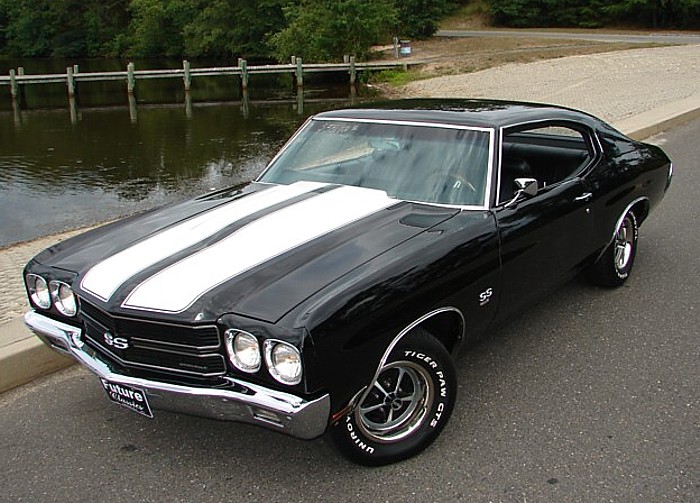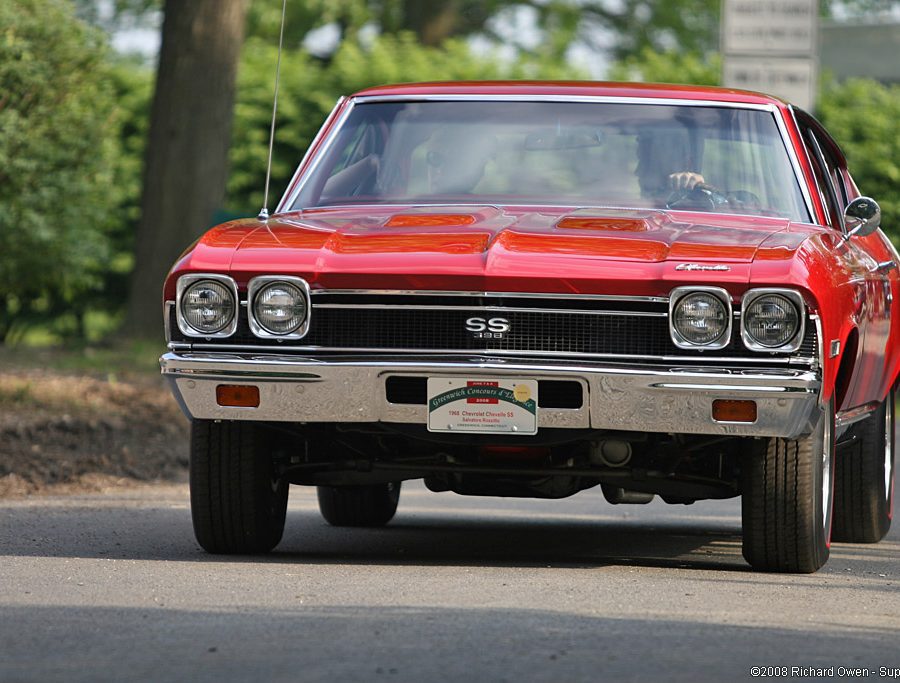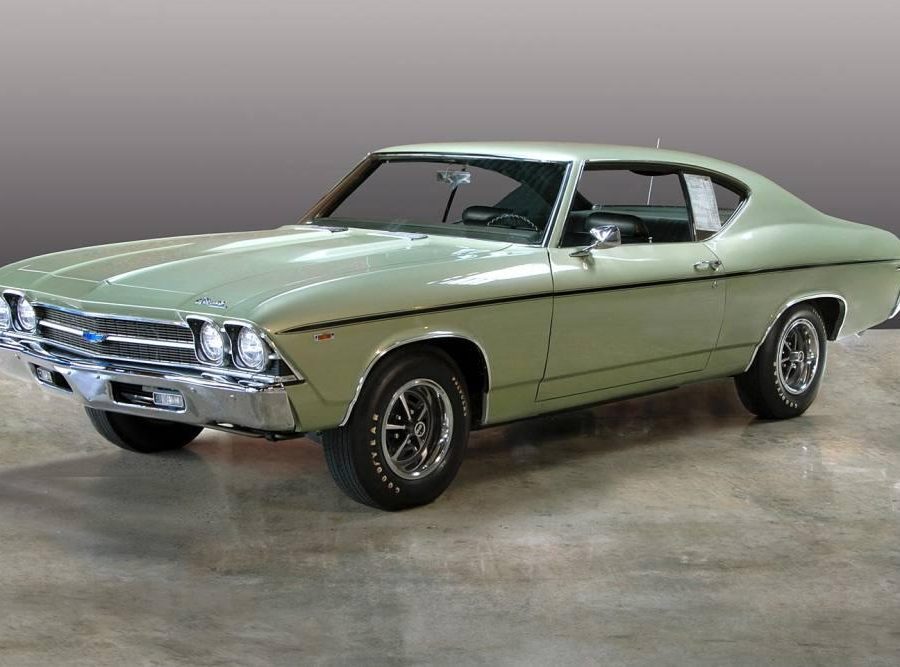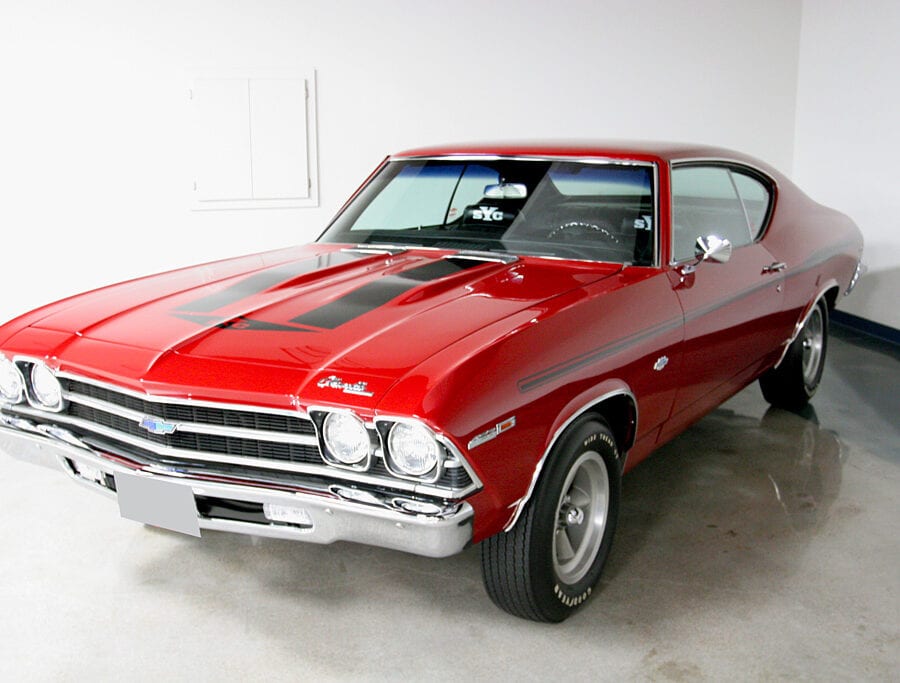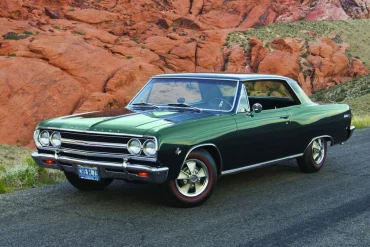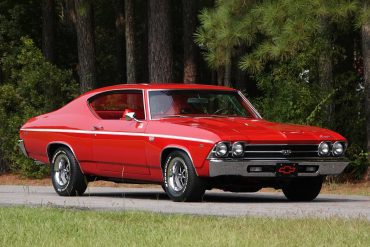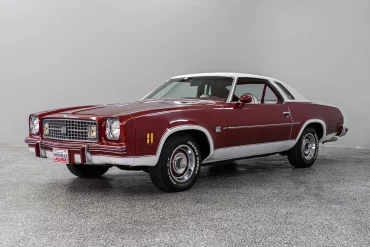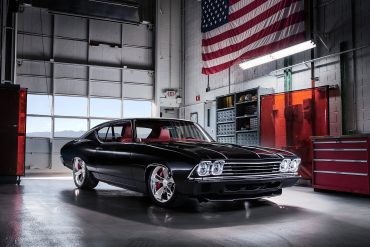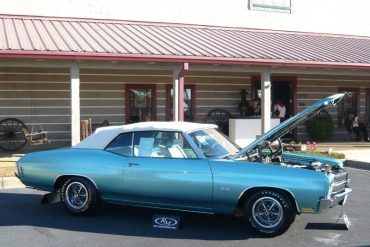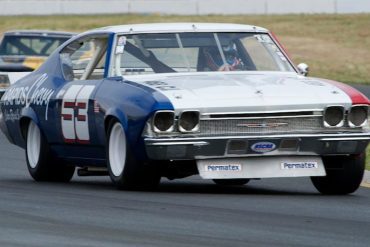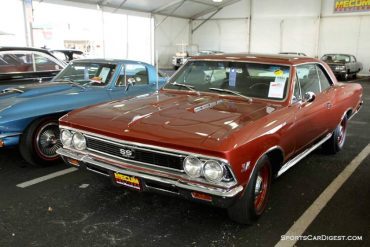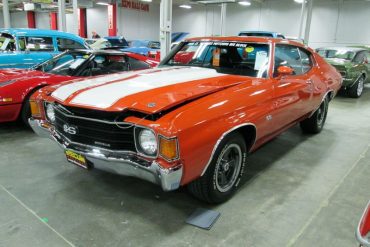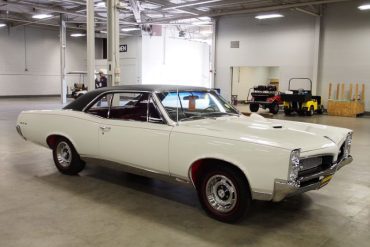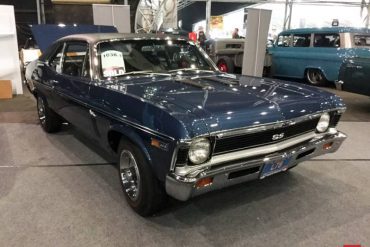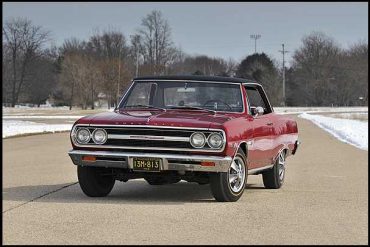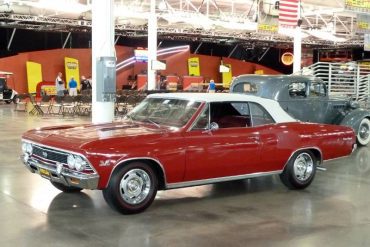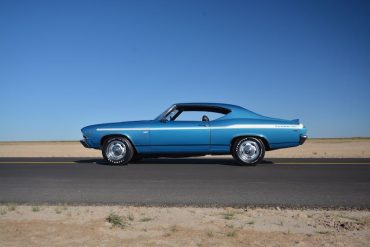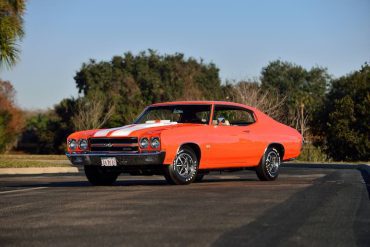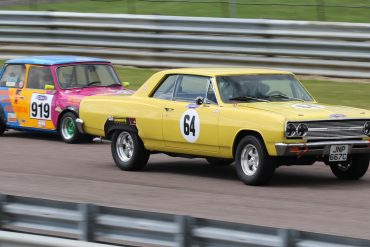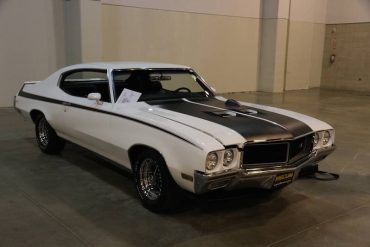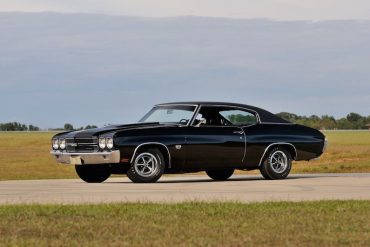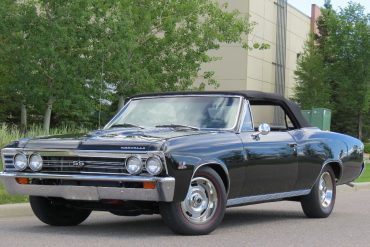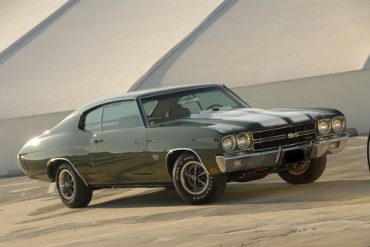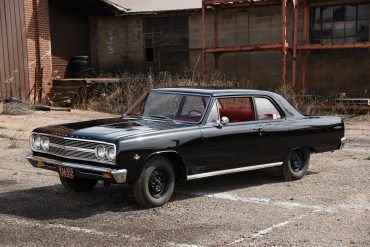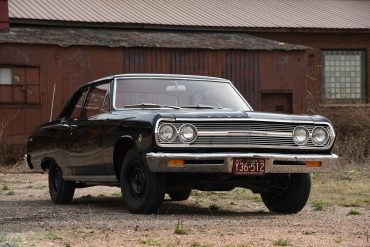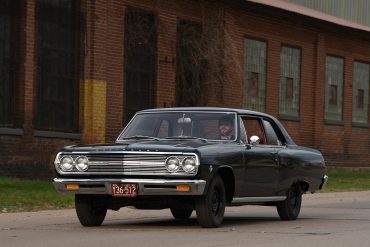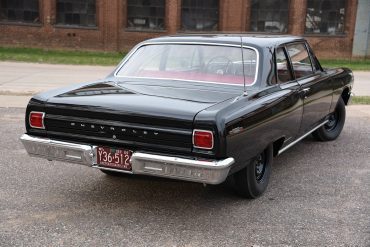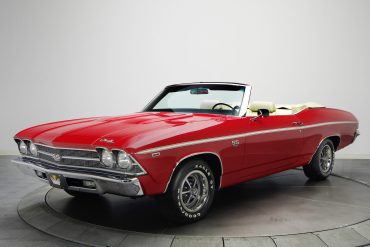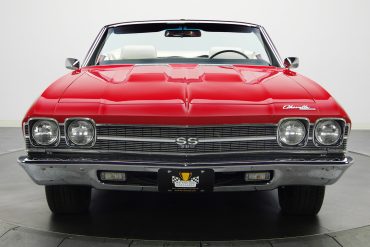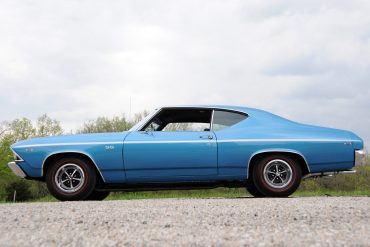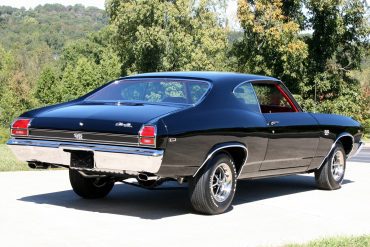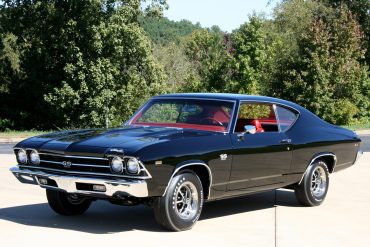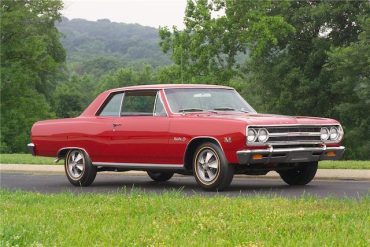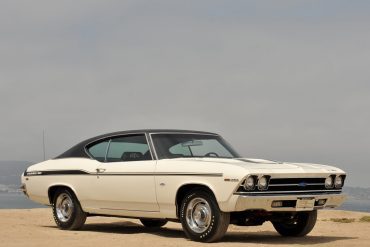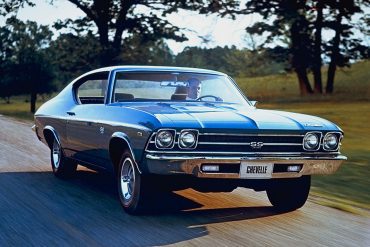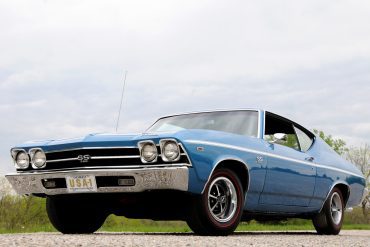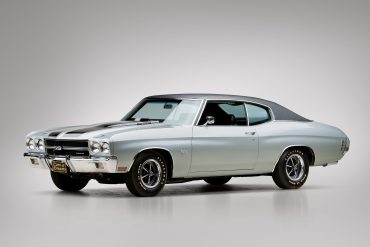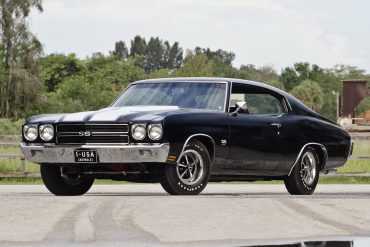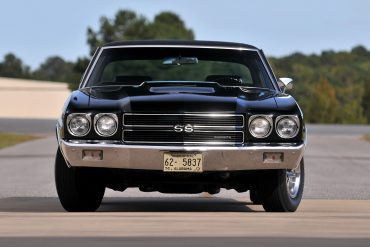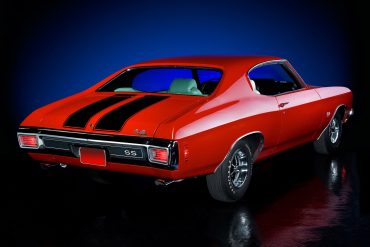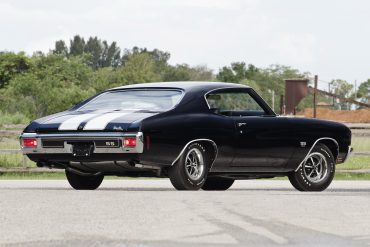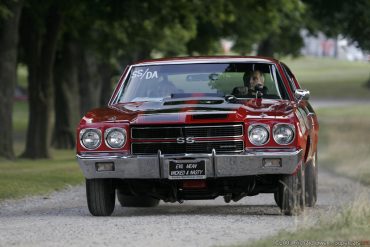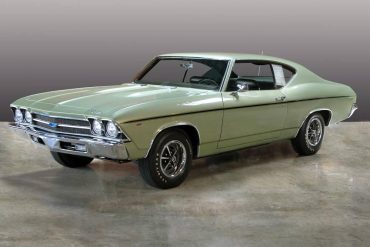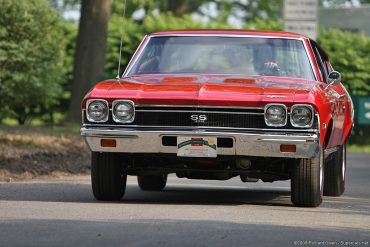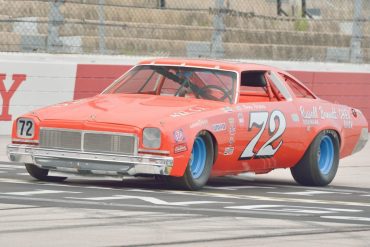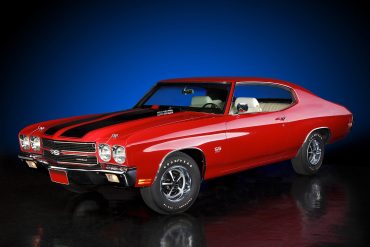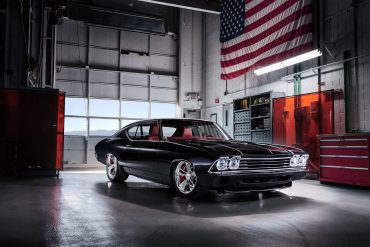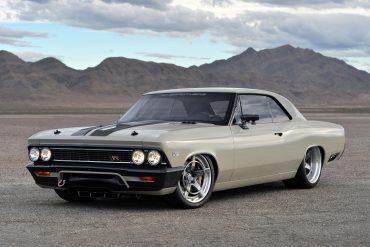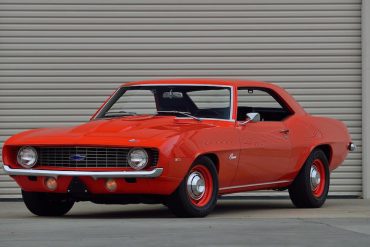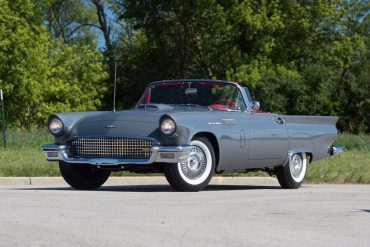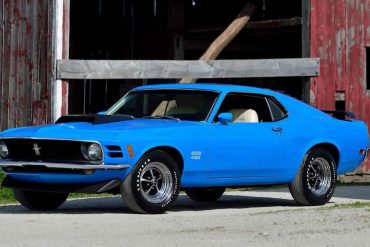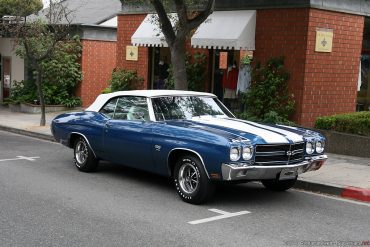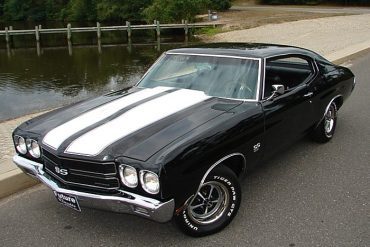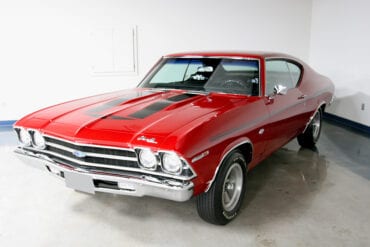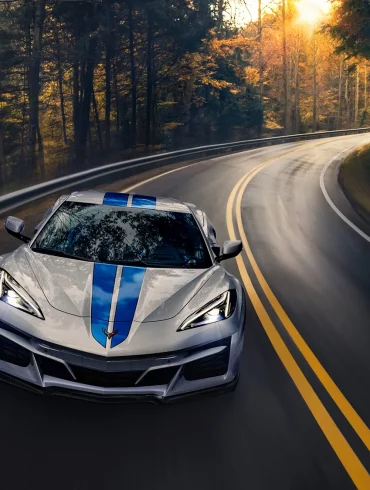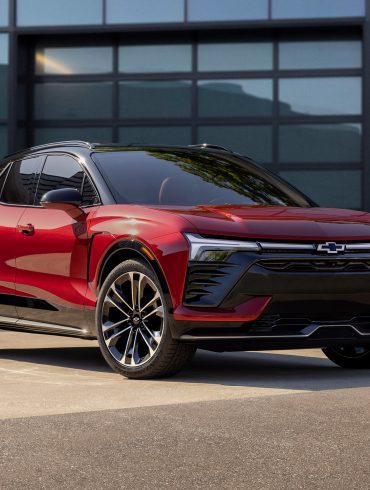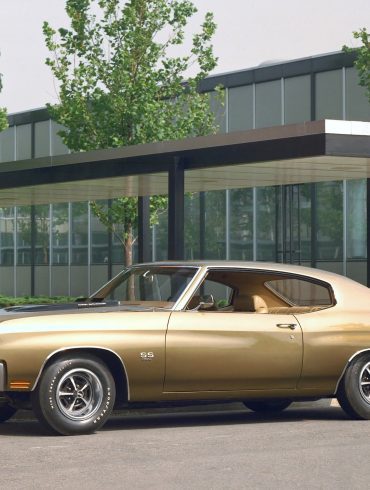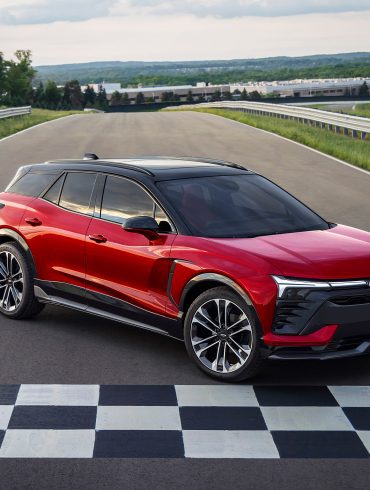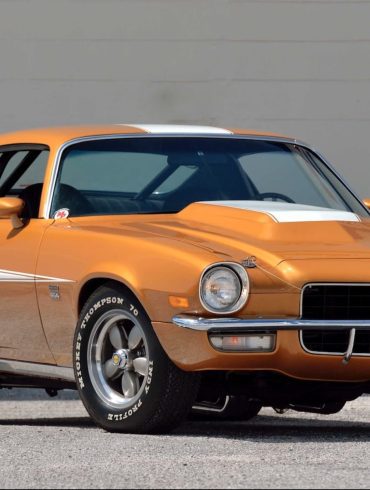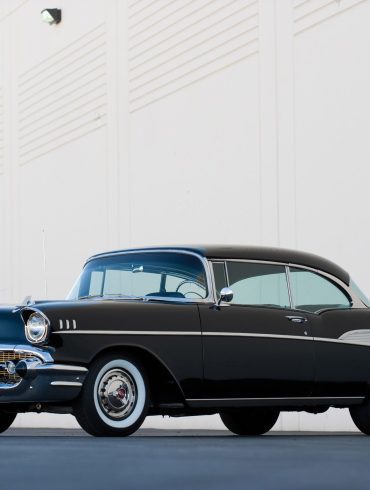1964→1972 Chevrolet Chevelle SS454 The LS6 engine was rated at 450hp, it has been suggested that the LS6 was underrated and actually produced well over 500hp See full Chevrolet Chevelle SS454 Gallery In Detail tags muscle submitted by anonymous production years 1964 – 1972 built at USA production 4475 price $...
Chevrolet Chevelle
1963 - 1977
Every Generation. Every Model Variant. Every Year.
Overview / Model & Variant List / Models In-Depth / Image Gallery / More Updates
The Chevelle became one of the defining American muscle cars during the '60s and '70s.
The Chevrolet Chevelle is a mid-sized automobile which was produced by Chevrolet in three generations for the 1964 through 1977 model years. Part of the General Motors (GM) A-body platform, the Chevelle was one of Chevrolet's most successful nameplates. It covered a wide range of vehicles, including coupes, sedans, convertibles, and station wagons. The Chevelle became one of the defining American muscle cars during the 1960s and 1970s.
The first-generation Chevelle debuted in 1964 and was designed to compete with the Ford Fairlane. It was a versatile platform that offered a variety of body styles and powertrains. These models featured a broad, square stance with clean, straight lines and were available with an array of engines, including economical inline-sixes and powerful V8s. The Malibu, positioned as the top trim level, became particularly popular, offering more luxurious appointments and additional features.
The 1968 redesign of the Chevelle moved it into its most famous era, the muscle car era. With a more aggressive and sportier look, the Chevelle's second generation featured a shorter wheelbase, long hood, and short deck profile, which became synonymous with the muscle car image. The SS (Super Sport) variant, which featured more powerful engines like the 396 and later the legendary 454 cubic inch Big-Block V8, became the halo model, offering impressive performance that rivaled more expensive sports cars. The SS 396 and the SS 454 are among the most sought-after muscle cars by collectors today.
The third generation saw a major redesign with a focus on safety, fuel economy, and increased comfort, aligning with the changing market conditions of the 1970s. The cars were larger and featured a more squared-off, formal appearance. The performance versions took a back seat as emissions regulations and fuel economy concerns led to a reduction in engine output. Despite this, the Chevelle remained popular, offering a range of engines, trim options, and body styles, including the luxurious Laguna S-3 coupe.
The Chevelle is remembered fondly by enthusiasts for its contribution to the muscle car era. Its combination of performance, style, and affordability allowed it to compete effectively in the market and earn a fond place in American automotive history. Models like the SS 396 and SS 454 are particularly celebrated for their high-performance engines, iconic designs, and status as symbols of muscle car prowess.
While Chevrolet discontinued the Chevelle after 1977, transitioning to smaller, more fuel-efficient models, the Chevelle's legacy endures. It continues to be a favorite among collectors, restorers, and classic car enthusiasts, cherished for its performance, style, and significant role in the golden era of American muscle cars. The enduring popularity of the Chevelle at car shows, auctions, and among classic car clubs underscores its lasting impact and importance in American automotive culture.
Did You Know?
Chevelle wasn't supposed to be the name. It was almost called the "Caribou." Luckily, cooler heads (and better marketing instincts) prevailed.
It saved Chevrolet's reputation. Introduced in 1964, the Chevelle was a direct response to the wildly popular Ford Mustang. It quickly outsold the Mustang, helping Chevy gain valuable ground in the muscle car wars.
Beaumont was the Canadian cousin. A Canadian-only model existed called the Acadian Beaumont. It was based on the Chevelle, but with minor cosmetic differences, making it even rarer.
It could be anything you wanted it to be. The Chevelle offered a huge variety of trims, engines, and body styles. You could get a basic family sedan, a fire-breathing SS muscle car, a stylish convertible, or even a practical El Camino pickup version!
It survived the oil crisis (sort of). Though muscle car sales suffered in the '70s, the Chevelle lasted until 1977, outliving some of its rivals. It even got a downsized redesign to adapt to the changing times.
"…the SS packed a serious punch. It was a true muscle car, and its potent engines delivered the kind of thrills that drivers craved."
VintageRoad&Race
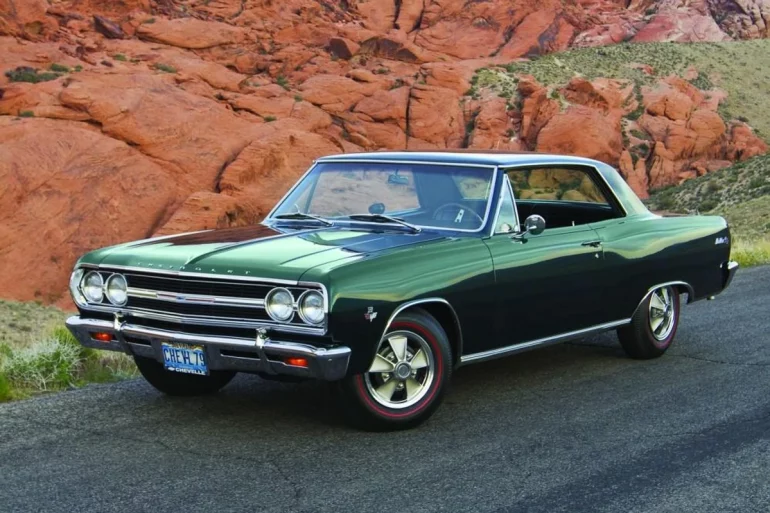
1st Gen Chevelle
Also called: Chevrolet Malibu
Production: 1963–1967
Model years: 1964–1967
Body style: 2-door hardtop, 2-door coupe, 2-door convertible, 2-door sedan, 4-door sedan, 4-door hardtop, 4-door station wagon, 2-door station wagon, 2-door utility
Engine: 3.2 L Hi-Thrift I6
Engine: 3.8 L Turbo-Thrift I6
Engine: 4.1 L Turbo-Thrift I6
Engine: 4.6 L Small-Block V8
Engine: 5.4 L Small-Block V8
Engine: 6.5 L Big-Block V8
Trans: 3-speed manual
Trans: 4-speed manual
Trans: 2-speed automatic
Trans: 3-speed automatic
Wheelbase: 115 in (2,921 mm)
Length: 197 in (5,004 mm)
Curb weight: 3,256 lb (1,477 kg)
Did You Know?
It was the only ALL new American car for 1964. In the 1964 model year, the Chevelle was a completely fresh design, not a rehash or upgrade of an existing model. This helped it become a massive success and compete directly with the groundbreaking Ford Mustang.
First Generation Chevrolet Chevelle (1964–1967)
When the Chevrolet Chevelle rolled out in 1964, it was more than just a new car; it was set to become an American icon, embodying the spirit of the muscle car era. The first-generation Chevelle, spanning from 1964 to 1967, was Chevrolet's foray into the mid-sized car market, and it quickly established itself as a versatile, stylish, and powerful vehicle that appealed to a broad audience. This era of Chevelle not only offered a range of body styles and engine options but also laid the foundation for what would become one of the most revered lineages in American automotive history.
The Genesis of Chevelle
The Chevrolet Chevelle was introduced to compete with Ford's Fairlane and Plymouth's Belvedere in the mid-sized automobile segment. With its debut, Chevy offered a model that combined an affordable price point with the aesthetics, performance, and customization options that American drivers desired. The Chevelle was available in a variety of body styles, including sedans, convertibles, coupes, and station wagons, catering to families, performance enthusiasts, and everyone in between.
Design and Styling
The first-generation Chevelle boasted a clean, boxy design characterized by its squared-off lines and balanced proportions, which echoed the larger, full-sized cars of the era but in a more compact, sporty form. The design was straightforward yet elegant, offering a canvas that was perfect for personalization, a key appeal of muscle cars. The Chevelle's styling evolved subtly over these years, with changes to the grille, headlights, and taillights, but it consistently maintained its robust, commanding presence.
Performance That Defined a Generation
Under the hood, the Chevelle came with a range of powertrains, from economical six-cylinder engines to powerful V8s, allowing buyers to tailor the car to their preferences for economy or performance. However, it was the introduction of Chevrolet's small-block V8 in the Chevelle that truly captured the hearts of performance enthusiasts. By 1965, the Chevelle SS (Super Sport) had become its own model, not just a trim level, signifying its focus on high performance with engines like the 327 cubic-inch V8, and later, the famous 396 cubic-inch big-block V8, which solidified the Chevelle's place in muscle car history.
The Chevelle SS: A Performance Icon
The Chevelle SS became the performance flagship of the model line, showcasing not only powerful engines but also sporty exterior cues like special badging, hood scoops, and rally wheels. The SS model was more than just a car; it was a statement of style, speed, and raw American power, becoming a coveted model among enthusiasts and racers alike.
Cultural Impact and Legacy
The first-generation Chevelle did more than just fill a market niche; it became a cultural phenomenon, embodying the optimism and passion for performance that defined the 1960s automotive scene. It appealed to families looking for a practical car, young buyers seeking style and speed, and racing enthusiasts craving high performance. The Chevelle's versatility, combined with its performance capabilities, helped it carve out a distinct identity that would leave a lasting legacy in the automotive world.
Today, the first-generation Chevelle is celebrated for its pioneering role in the muscle car era, its beautiful simplicity in design, and its thrilling performance. These cars are highly sought after by collectors and enthusiasts, revered not just for their beauty and power but for their significant place in American automotive history. Restored models and lovingly maintained originals still turn heads, reminding us of a time when driving was about freedom, excitement, and the roar of a V8 engine under the hood.
In retrospect, the first-generation Chevrolet Chevelle wasn't just a car; it was a cornerstone of American muscle car heritage, a symbol of a bygone era of automotive excellence that continues to captivate the hearts of car enthusiasts around the globe.
Second Generation Chevrolet Chevelle (1968–1972)
The late 1960s and early 1970s represented the zenith of the American muscle car era, and at the heart of this golden age was the second-generation Chevrolet Chevelle. Launched in 1968 and produced through 1972, this generation of the Chevelle solidified its status as an automotive icon, embodying the raw power, bold style, and pure driving excitement that muscle cars were all about. The Chevelle wasn't just a car; it became a cultural phenomenon, a symbol of performance and freedom on four wheels.
A Design Revolution
The 1968 redesign of the Chevelle marked a significant departure from the first generation's more conservative styling. The new Chevelle featured a more aggressive, coke bottle styling that was all the rage in the muscle car world, characterized by its long hood, short deck, and sculpted body sides. This design wasn't just about looks; it also improved the car's aerodynamics and gave it a more formidable road presence. The Chevelle's aesthetic was further enhanced by a range of vibrant colors and bold stripes, epitomizing the era's exuberant automotive design trends.
Unleashing the Big Blocks
The heart and soul of the Chevelle—and indeed any muscle car—is its engine, and the second-generation Chevelle boasted some of the most powerful engines of the era. The introduction of the SS 396 model brought with it the thunderous big-block 396 cubic inch V8, capable of producing 325 to 375 horsepower. But Chevrolet didn't stop there; by 1970, the Chevelle SS could be equipped with the legendary 454 cubic inch LS6 V8, one of the most powerful engines ever put into a production car, delivering an astonishing 450 horsepower and 500 lb-ft of torque.
The SS Badge: A Symbol of Performance
The Super Sport (SS) models of the Chevelle became the standard-bearers for Chevrolet's performance prowess. Featuring special badging, unique hood designs, and an array of high-performance options, the SS variants were a formidable presence on the street and the track. They offered not just increased power but also improved suspension, better tires, and stronger brakes, making the Chevelle SS a well-rounded performance machine that could handle, accelerate, and stop with the best of its peers.
Racing Glory and Street Dominance
The Chevelle's powerful engines and robust construction made it a favorite in drag racing, stock car racing, and even road racing circuits. Its versatility and reliability under high-stress conditions endeared it to racers and weekend warriors alike. On the streets, the Chevelle was equally dominant, its rumbling V8 a clear signal of its muscle car credentials, turning heads and commanding respect wherever it went.
A Legacy That Endures
The second-generation Chevelle remains one of the most sought-after muscle cars in the collector's market. Its combination of beautiful styling, immense power, and cultural significance has made it a timeless classic. The Chevelle from this era encapsulates a period in automotive history where performance and style were paramount, and driving a powerful, beautifully designed car was a source of pride and joy.
The enduring appeal of the second-generation Chevelle is not just about nostalgia; it's a testament to the car's design, engineering, and the emotional connection it forged with a generation of enthusiasts. It represents a time when cars were more than just transport; they were expressions of personality and freedom, machines that made your heart race and your spirits soar.
As we look back on the golden era of muscle cars, the second-generation Chevelle stands out as a true icon, a machine that captured the essence of an exhilarating period in American automotive history. Its legacy continues to influence modern performance cars, reminding us of a time when power and beauty combined to create something truly special on the open road.
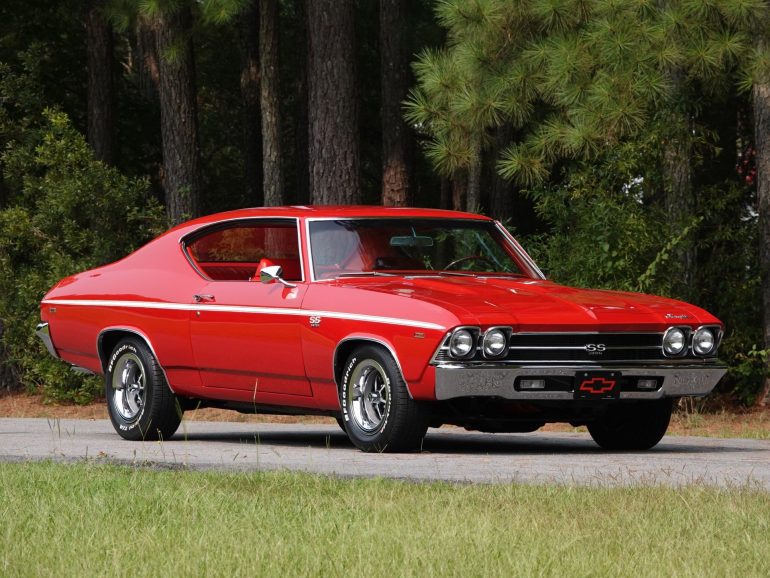
2nd Gen Chevelle
Also called: Chevrolet Malibu
Production: 1967–1972
Model years: 1968–1972
Body style: 2-door hardtop, 2-door coupe, 2-door convertible, 2-door sedan, 4-door sedan, 4-door hardtop, 4-door station wagon, 2-door coupé utility
Engine: 3.8 L Turbo-Thrift I6
Engine: 4.1 L Turbo-Thrift I6
Engine: 5.0 L Small-Block V8
Engine: 5.4 L Small-Block V8
Engine: 5.7 L Small-Block V8
Engine: 6.5 L Big-Block V8
Engine: 6.6 L Small-Block V8
Engine: 6.6 L Big-Block V8
Engine: 7.0 L Big-Block V8
Engine: 7.4 L Big-Block V8"
Trans: 3-speed manual
Trans: 4-speed manual
Trans: 2-speed automatic
Trans: 3-speed automatic
Wheelbase: 112 in (2,845 mm) Coupe, 116 in (2,946 mm) Sedan/Wagon
Length: 201.2 in (5,110 mm) (sedan), 206.5 in (5,245 mm) (wagon), 197.2 in (5,009 mm) (coupe)
Width: 75.4 in (1,915 mm)
Height: 53.2 in (1,351 mm) (sedan), 55.1 in (1,400 mm) (wagon), 52.6 in (1,336 mm) (coupe)
Curb weight: 3,520 lb (1,597 kg)
Did You Know?
The 1970 Chevelle SS 454 LS6 is one of the most powerful muscle cars ever made. This legendary model boasted a 454 cubic inch big-block V8 engine that produced a whopping 450 horsepower in its stock configuration. Many enthusiasts believe the actual horsepower was even higher, making it an absolute beast!
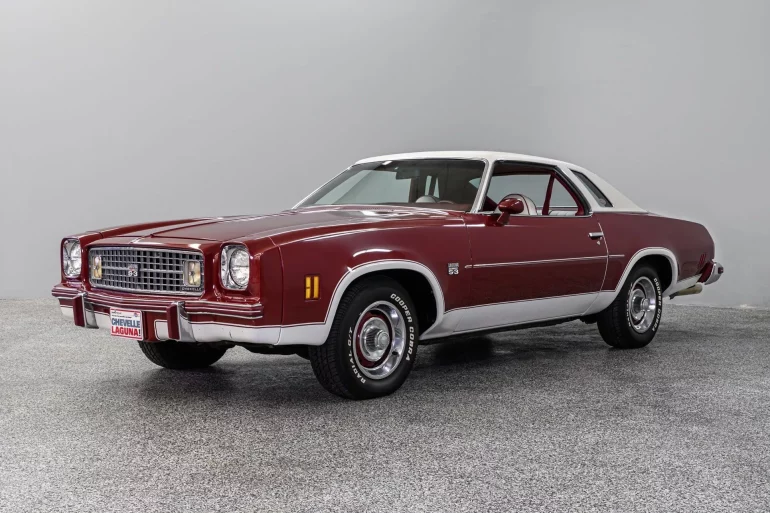
3rd Gen Chevelle
Also called: Chevrolet Malibu, Chevrolet Chevelle Laguna
Production: 1972–1977
Model years: 1973–1977
Body style: 2-door coupe, 4-door sedan, 4-door station wagon
Engine: 4.1 L Turbo-Thrift I6
Engine: 5.0 L Small-Block V8
Engine: 5.0 L Small-Block V8
Engine: 5.7 L Small-Block V8
Engine: 6.6 L Small-Block V8
Engine: 7.4 L Big-Block V8"
Trans: 3-speed manual
Trans: 4-speed manual
Trans: 3-speed automatic
Wheelbase: 112 in (2845 mm) Coupe, 116 in (2997 mm) Sedan/Wagon
Length: 209.7 in (5,326 mm) (sedan), 215.4 in (5,471 mm) (wagon), 205.7 in (5,225 mm) (coupe)
Width: 77.3 in (1,963 mm)
Height: 54.1 in (1,374 mm) (sedan), 55.8 in (1,417 mm) (wagon), 53.4 in (1,356 mm) (coupe)
Did You Know?
The Laguna S-3 was a NASCAR superstar. While all of the third-gen Chevelles had a more luxurious bent, the Laguna S-3 model was a racing homologation special built to dominate NASCAR. These cars, driven by legends like Cale Yarborough, claimed multiple championship wins, solidifying the Chevelle's place in racing history.
Third Generation Chevrolet Chevelle (1973–1977)
When the Chevrolet Chevelle rolled out in 1964, it was more than just a new car; it was set to become an American icon, embodying the spirit of the muscle car era. The first-generation Chevelle, spanning from 1964 to 1967, was Chevrolet's foray into the mid-sized car market, and it quickly established itself as a versatile, stylish, and powerful vehicle that appealed to a broad audience. This era of Chevelle not only offered a range of body styles and engine options but also laid the foundation for what would become one of the most revered lineages in American automotive history.
The Genesis of Chevelle
The Chevrolet Chevelle was introduced to compete with Ford's Fairlane and Plymouth's Belvedere in the mid-sized automobile segment. With its debut, Chevy offered a model that combined an affordable price point with the aesthetics, performance, and customization options that American drivers desired. The Chevelle was available in a variety of body styles, including sedans, convertibles, coupes, and station wagons, catering to families, performance enthusiasts, and everyone in between.
Design and Styling
The first-generation Chevelle boasted a clean, boxy design characterized by its squared-off lines and balanced proportions, which echoed the larger, full-sized cars of the era but in a more compact, sporty form. The design was straightforward yet elegant, offering a canvas that was perfect for personalization, a key appeal of muscle cars. The Chevelle's styling evolved subtly over these years, with changes to the grille, headlights, and taillights, but it consistently maintained its robust, commanding presence.
Performance That Defined a Generation
Under the hood, the Chevelle came with a range of powertrains, from economical six-cylinder engines to powerful V8s, allowing buyers to tailor the car to their preferences for economy or performance. However, it was the introduction of Chevrolet's small-block V8 in the Chevelle that truly captured the hearts of performance enthusiasts. By 1965, the Chevelle SS (Super Sport) had become its own model, not just a trim level, signifying its focus on high performance with engines like the 327 cubic-inch V8, and later, the famous 396 cubic-inch big-block V8, which solidified the Chevelle's place in muscle car history.
The Chevelle SS: A Performance Icon
The Chevelle SS became the performance flagship of the model line, showcasing not only powerful engines but also sporty exterior cues like special badging, hood scoops, and rally wheels. The SS model was more than just a car; it was a statement of style, speed, and raw American power, becoming a coveted model among enthusiasts and racers alike.
Cultural Impact and Legacy
The first-generation Chevelle did more than just fill a market niche; it became a cultural phenomenon, embodying the optimism and passion for performance that defined the 1960s automotive scene. It appealed to families looking for a practical car, young buyers seeking style and speed, and racing enthusiasts craving high performance. The Chevelle's versatility, combined with its performance capabilities, helped it carve out a distinct identity that would leave a lasting legacy in the automotive world.
Today, the first-generation Chevelle is celebrated for its pioneering role in the muscle car era, its beautiful simplicity in design, and its thrilling performance. These cars are highly sought after by collectors and enthusiasts, revered not just for their beauty and power but for their significant place in American automotive history. Restored models and lovingly maintained originals still turn heads, reminding us of a time when driving was about freedom, excitement, and the roar of a V8 engine under the hood.
In retrospect, the first-generation Chevrolet Chevelle wasn't just a car; it was a cornerstone of American muscle car heritage, a symbol of a bygone era of automotive excellence that continues to captivate the hearts of car enthusiasts around the globe.
Chevrolet Chevelle Variants & Derivatives
The Chevrolet Chevelle is a mid-sized automobile which was produced by Chevrolet in three generations for the 1964 through 1977 model years. Part of the General Motors (GM) A-Body platform, the Chevelle was one of Chevrolet's most successful nameplates. Body styles include coupes, sedans, convertibles and station wagons. Super Sport versions were produced through the 1973 model year, and Lagunas from 1973 through 1976. After a four-year absence, the El Camino was reintroduced as part of the new Chevelle lineup in 1964. The Chevelle also provided the platform for the Monte Carlo introduced in 1970. The Malibu, the top of the line model through 1972, completely replaced the Chevelle nameplate for the redesigned, downsized 1978 model year.
Three generations of Chevelle: 1st Gen (1964-1967) / 2nd Gen (1968-1972) / 3rd Gen (1973-1977).
1964 Chevelle 300
1964 Chevelle Malibu
1964 Chevelle Malibu SS (Super Sport)
1965 Chevelle 300
1965 Chevelle 300 Deluxe
1965 Chevelle Malibu
1965 Chevelle Malibu SS
1965 Chevelle SS396
1966 Chevelle 300
1966 Chevelle 300 Deluxe
1966 Chevelle Malibu
1966 Chevelle SS396 (SuperSport)
1967 Chevelle 300
1967 Chevelle 300 Deluxe
1967 Chevelle Malibu
1967 Chevelle Concours Custom
1967 Chevelle SS396 (Super Sport)
1968 Chevelle 300
1968 Chevelle 300 Deluxe
1968 Chevelle Malibu
1968 Chevelle Malibu Concours Sport Sedan
1968 Chevelle Concours Estate Wagon
1968 Chevelle SS396 (Super Sport)
1969 Chevelle Nomad Wagon
1969 Chevelle 300 Deluxe
1969 Chevelle Malibu
1969 Chevelle Malibu Concours Sport Sedan
1969 Chevelle Malibu Concours Estate Wagon
1969 Chevelle SS 396 (Super Sport)
1970 Chevelle Nomad Wagon
1970 Chevelle
1970 Chevelle Malibu
1970 Chevelle Malibu Concours Estate Wagon
1970 Chevelle SS396 (SuperSport)
1970 Chevelle SS454 (SuperSport)
1971 Chevelle Nomad Wagon
1971 Chevelle
1971 Chevelle Malibu
1971 Chevelle Heavy Chevy
1971 Chevelle SS (Super Sport)
1971 Chevelle SS 454 (Super Sport)
1972 Chevelle Nomad Wagon
1972 Chevelle
1972 Chevelle Malibu
1972 Chevelle Malibu Concours Estate Wagon
1972 Chevelle Heavy Chevy
1972 Chevelle SS (Super Sport)
1972 Chevelle SS 454 (Super Sport)
1973 Chevelle Deluxe
1973 Chevelle Malibu
1973 Chevelle Laguna
1974 Chevelle Malibu
1975 Chevelle Malibu
1975 Chevelle Malibu Classic
1975 Chevelle Laguna Type S-3
1976 Chevelle Malibu
1976 Chevelle Malibu Classic
1976 Chevelle Laguna Type S-3
1977 Chevelle Malibu
1977 Chevelle Malibu Classic
1977 Chevelle Laguna Type S-3
"The Chevelle embodied the bold and confident style of American cars of its era. It had a presence on the road that couldn't be ignored."
SportsCarDigest


